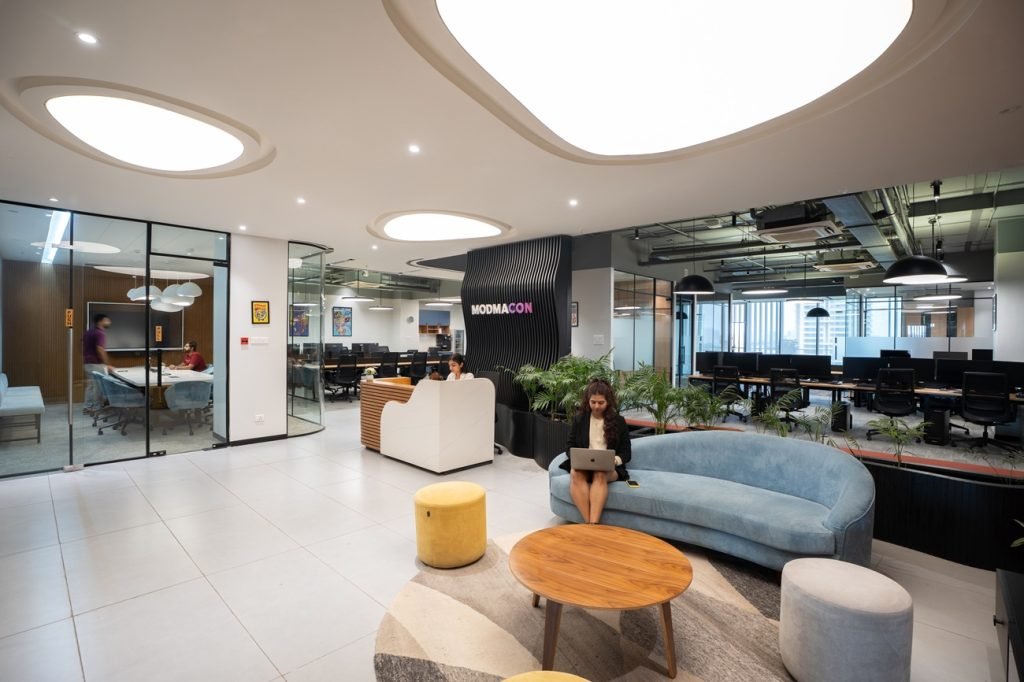One thing never changes in the continually evolving field of office design: the desire to increase employee productivity. Businesses and organisations are consistently seeking innovative methods to establish environments that not only encourage ingenuity and cooperation but also enhance overall well-being.
This quest has given rise to a renewed focus on the strategic placement of breakout areas and collaboration zones within the workplace. In this article, we will explore how these spaces play a pivotal role in boosting employee productivity and job satisfaction while maintaining a unique and engaging work environment.
The Changing Face of Office Design
Modern office design has come a long way from the traditional, rigid layouts of the past. The shift towards open-plan offices, co-working spaces, and remote work has prompted reevaluating how we utilise office real estate. The introduction of breakout areas and collaboration zones is a direct response to this change. These spaces create an environment where employees can work, connect, and recharge throughout the day.
The Power of Breakout Areas
The nice little spaces in an office where workers may go away from their desks, unwind, and socialise with peers are known as breakout rooms. Their purpose is to offer a visual shift, which has the potential to induce a mental shift. Here’s how they contribute to enhancing productivity:
- Encouraging Informal Meetings: Breakout areas are ideal for impromptu meetings or brainstorming sessions. Their relaxed atmosphere promotes spontaneous discussions, making them perfect for quick problem-solving and idea generation.
- Reducing Stress: The workplace can be stressful, and breakout areas offer employees a place to disconnect, relax, or even meditate momentarily. This downtime can significantly reduce stress levels and boost overall productivity.
- Boosting Creativity: Change of environment often triggers creativity. Employees stepping away from their desks and working in a different setting may think outside the box, leading to innovative solutions and ideas.
- Enhancing Focus: Strangely enough, taking breaks in breakout areas can enhance focus. Short mental respites help employees maintain concentration and avoid burnout.
The Magic of Collaboration Zones
Collaboration zones, on the other hand, are explicitly designed for teamwork. These areas are meant to be dynamic and versatile, catering to different collaboration styles. They play a vital role in enhancing productivity through:
- Enhancing Communication: Collaboration zones facilitate effective communication and teamwork. When employees can quickly meet, discuss, and work together, the flow of information and ideas becomes seamless.
- Supporting Different Work Modes: These zones can have various seating arrangements, whiteboards, and interactive technology. This flexibility ensures employees have a space suitable for their specific needs, whether a quiet discussion or a lively group project.
- Fostering Innovation: Innovation often arises from the cross-pollination of ideas. Collaboration zones create an environment where team members from various departments can come together, exchange thoughts, and generate innovative solutions.
- Improving Knowledge Sharing: Knowledge is a valuable asset within an organisation. Collaboration zones encourage knowledge sharing, helping new employees learn from experienced colleagues and promoting professional development.
The Perfect Blend
For an effective office design, the marriage of breakout areas and collaboration zones is essential. These two concepts complement each other, offering various spaces catering to employees’ diverse needs and working styles. It’s all about balance.
Breakout areas provide tranquillity and serenity for focused work and relaxation, while collaboration zones energise the workplace with the hum of shared ideas and teamwork. This duality of spaces nurtures not only individual productivity but also collective innovation.
Adaptability: The Key to Success
Flexibility is paramount in modern office design. Breakout areas and collaboration zones should be adaptable to meet the changing needs of the workforce.
- Scalability: As businesses grow and evolve, the need for these spaces can change. Adaptable furniture, movable partitions, and modular design ensure these areas can scale up or down as required.
- Technology Integration: Collaboration zones should seamlessly integrate with the latest tech tools, making video conferences, brainstorming sessions, and presentations hassle-free.
- Privacy Options: Not all employees work the same way. Offering private nooks or enclosed collaboration rooms in addition to open areas caters to introverts and those who need focused work time.
Studio AsA: Designing Spaces for Success
When it comes to designing offices that embrace the power of breakout areas and collaboration zones, Studio AsA stands out as the leading interior designer. Our innovative approach to creating dynamic, functional, and aesthetically pleasing spaces has garnered us a reputation for excellence.
Studio AsA offers the best interior design services tailored to commercial spaces, hotels, restaurants, and office interiors. Our team of expert office designers understands the importance of striking the right balance between breakout areas and collaboration zones.
Breakout areas and collaboration zones have emerged as essential components of modern office design, and their role in enhancing employee productivity is indisputable. By embracing the principles of these innovative spaces, companies can harness the full potential of their workforce and achieve new heights of success.





